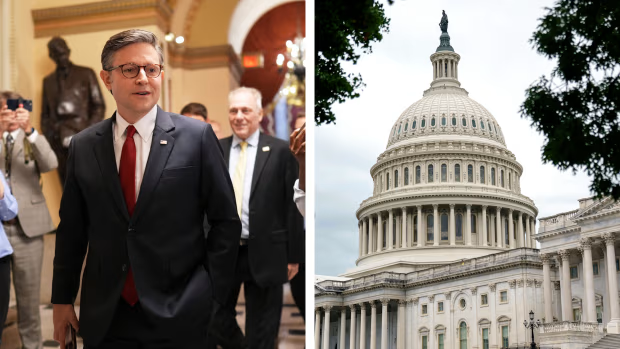
NSE childcare abuse probe
1. A Crisis in Care NSE Launches Broad Childcare Abuse Investigation
In a sobering response to mounting allegations, the New South Wales government has initiated a comprehensive investigation into suspected abuse within childcare settings across the state. Sparked by a string of concerning complaints ranging from unexplained injuries to emotional neglect and improper supervision the probe aims to assess not just isolated incidents but systemic failures in policies, training, and oversight. With thousands of young children entrusted daily to early education providers, the inquiry addresses the fundamental social contract between families and institutions that no child should suffer harm in pursuit of learning and care.
While the public outcry began with a handful of high profile cases in metropolitan Sydney, the issues now extend far beyond city borders. Regional and rural areas, often seen as more close knit and safe, have surfaced their own troubling stories. Parents have reported bruises that couldn’t be explained, audio recordings capturing raised voices, and children exhibiting regression in social behaviors. As collective awareness grew, so did the demand for transparency and action. The NSE government’s move to assign senior investigators and education officials reflects a determination to root out both genuine wrongdoing and the conditions that allow it to thrive.
2. Unpacking the Allegations From Physical to Psychological Harms
Initial scrutiny has focused on tangible cases children showing bruising, unexplained scratches, or even broken bones where no accident had been recorded. But investigators are delving deeper, exploring emotional and psychological abuse that is harder to detect but equally damaging. Reports claim that angry shouting, public shaming during group sessions, and isolating children from peers have been more common than previously thought. These forms of emotional stress often leave no visible mark, yet can destabilize a child's sense of security, prompting anxiety, withdrawal, or sleep disturbances.
Any credible probe into childcare must address both preventable physical harm and its less visible counterpart. Many facilities place heavy emphasis on physical safety sign in sheets, secure gates, padded floors but emotional safety often falls through the cracks. This dual focus expands the scope of the probe significantly; investigators are now reviewing staff child interactions, logs kept by educators, and interviews with parents whose children display sudden changes in confidence or behavior after returning home.
3. Institutional Failures Where Policies Break Down
As the investigation moves forward, one glaring theme has emerged broken or inadequate institutional policies. In multiple cases, staff reported receiving only a few hours of annual training, often focused on basic First Aid rather than child behavioral health or de escalation techniques. Some facilities lacked clear reporting protocols, forcing parents or teachers to follow convoluted chains of command if they wished to escalate concerns. One former educator revealed to investigators that casual language such as “we don’t want to rock the boat” often dampened reflection on harmful behavior within teams.
Licensing documents, too, are under examination. Some premises that boasted full accreditation were found to have lapsed renewals or incomplete staff background checks. In others, deficiencies were hidden behind paperwork fire safety certifications that hadn’t been updated, or staff ratios that met the letter but not the spirit of regulations. These lapses raise uncomfortable questions about the effectiveness of current licensing reviews and if regulatory bodies consistently enforce standards once initial approvals have been granted.
4. Staff Perspectives Burnout, Pressure, and the Risk to Kids
When investigators interviewed childcare workers, a picture emerged of strained professionals caught between well intentioned goals and demanding realities. Many educators spoke of under resourced environments, where the ideal ratio of one adult per four children often stretched to one per eight during shift changes or peak lunch times. When exhausted, some admitted losing patience raising their voices or adopting “time out” practices intended to contain groups but used inconsistently and sometimes harshly.
Mental health professionals hired by the probe highlighted that burnout can reduce empathy, escalate frustration, and increase the likelihood of unkind or even harmful responses to typical toddler behavior. Staff confessed that on difficult days, “managing meltdowns” took precedence over reflective care. While most expressed remorse over times they reacted poorly, a few cautioned that systemic support like repeat training, redundancy breaks, and access to counseling is vital for protecting both educators and children, and must be prioritized in any reform plan.
5. Parent Reactions Trust Fractured, Demands Heightened
The probe has prompted a wave of parental anxiety. Families who once left their children in trusted care are now expressing anger, confusion, and heartbreak. Many describe a dual reality reliance on childcare for economic survival and deep apprehension over potential harm. Quarantine protocols during lockdowns had already limited in person school oversight; now online communication logs and daily handover talks once routine are viewed with more suspicion.
To rebuild trust, parents are calling for stronger transparency. They want access to live video feeds, more frequent quality reviews, and a tiered system of accreditation that reflects quality and safety levels. Some suggest introducing parent representation on oversight boards and mandating thorough explanatory reporting whenever an incident occurs like a clear account of injury origins and steps taken afterward holding facilities accountable and making wrongdoing harder to conceal.
6. Reforms Under Consideration From Training to Real Time Monitoring
The NSE government has already laid out several reform proposals emerging from early probe findings, spanning training, oversight, and transparency. Among them
Mandatory enhanced training, including child psychology, stress reduction, and respectful intervention strategies.
Unannounced inspections, replacing the current model that allows facilities to prepare and possibly mask issues.
Live streaming options in shared spaces behind the scenes allowing parents limited, discretionary access during the day.
A publicly accessible incident registry, detailing accidents, near misses, and substantiated misconduct reported and resolved.
Wellbeing support for staff, including mandatory breaks, access to counseling, and realistic educator to child ratios.
These measures hint at a future childcare landscape built on openness rather than mere compliance if they are enacted and enforced consistently.
7. Systemic Reckoning A Path Toward Safer Childhoods
The NSE childcare abuse probe is not just a response; it is a moment of reckoning. It spotlights how a cherished public service can still harbor unseen dangers when policies are weak, oversight lapses, and staff are overstretched. The audacity of the probe lies in its ambition not simply identifying gold plated facilities, but shining light on structural weaknesses that can persist unnoticed.
As the investigation moves into its next phase analysing staff interviews, reviewing internal records, and working with child behavior experts the hope is that meaningful change can emerge. The goal is not to shame the many responsible providers, but to elevate the entire system creating safer environments, forging pathways to restore trust, and clarifying what it truly means to provide “care” beyond the basics. In doing so, NSE may pave a model for other regions grappling with similar concerns.










